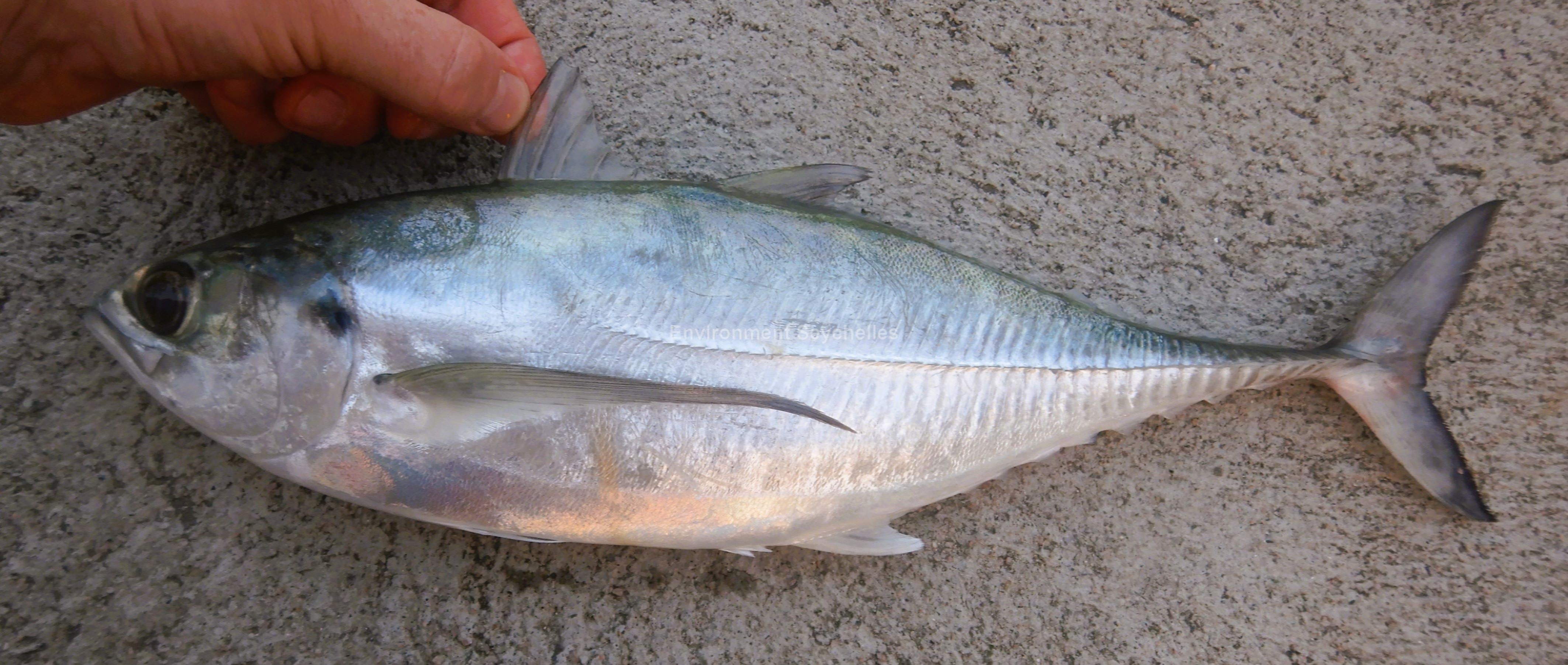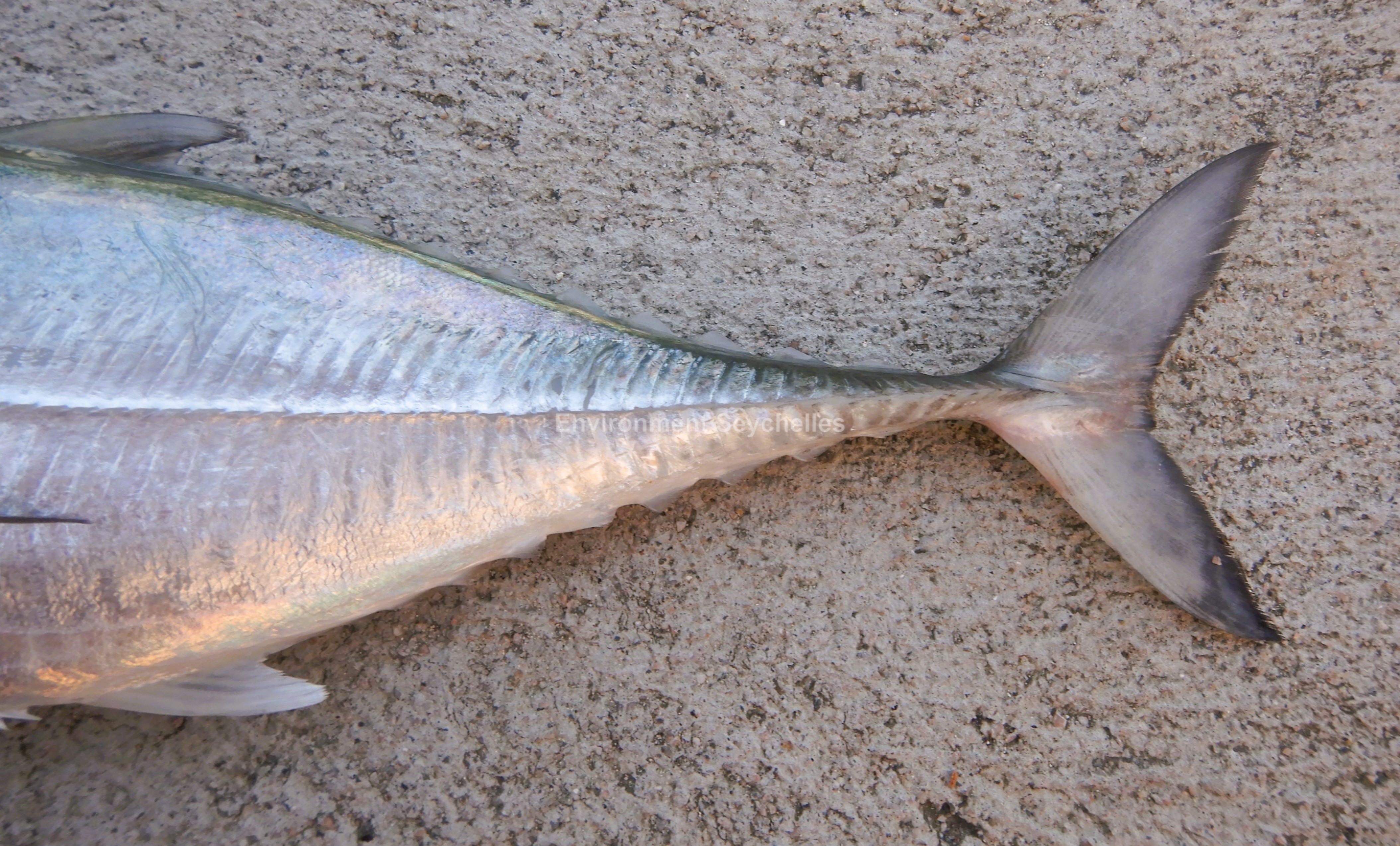Description:
Dorsal spines: 9; Dorsal rays: 18-20 (2 separate dorsal fins, the first with 8 spines, the second with 1 spine and 18 to 20 soft rays) plus 7-9 finlets; Anal spines: 3 (anal fin with 2 detached spines followed by 1 spine); Anal rays: 16-17 plus 8-10 finlets.
Body elongate, subcylindrical, a little compressed posteriorly, caudal peduncle narrow and compressed with a marked medial keel. Snout and lower jaw pointed, with a single row of small teeth, except a narrow band anteriorly. Upper jaw has small villiform teeth and extends posteriorly to centre of eye. Adipose eyelid, well-developed, covering eye except for a vertical slit centred on pupil.
Pectoral fin long, scythe-like. Lateral line strongly arched anteriorly, with junction of curved and straight parts below 4th or 5th spine of dorsal fin; straight part with 51 to 59 very large, prominent scutes.
Breast naked ventrally and laterally in a triangular area for about one third distance to pectoral fin base.
Colour: head and body bluish-grey to green dorsally becoming silver on flanks and ventrally. Large black opercular spot. Dorsal and anal fins pale to yellow, distally dusky; pectoral and pelvic fins pale, with upper half dusky. Caudal fin dark, especially leading and trailing edges of fin.
Juveniles may have prominent dark stripes along the sides.
Size:
Maturity: Lm 22.0 range unknown cm.
Max length : 80.0 cm TL; common length : 45.0 cm TL. Max. published weight: 4.0 kg
Habitat and Ecology:
Adults are a pelagic schooling species (depth 20-100 m) rarely seen around reefs. Feed mainly on fishes.
Fishery Status:
This species is not protected or subject to fisheries regulations.
Reported internationally as caught on hook and line, trawls and purse seines but is a very rare component of the local catch.
Notes:
No other species of Carangidae has the combination of lateral line with very large scutes and posterior soft
dorsal and anal fin rays consisting of a series of detached finlets.
Thanks go to Mr. Faizal Suleman for bringing this specimen to our attention.
References:
Bray, D.J. (2023). Megalaspis cordyla in Fishes of Australia, https://fishesofaustralia.net.au/home/species/4275 (27/07/25)
Froese, R. & D. Pauly. (Eds.) (2025). FishBase. Megalaspis cordyla, Torpedo scad. https://www.fishbase.se/summary/384 (27/07/25).
Smith-Vaniz, W.F. (1984). Carangidae. In W. Fischer and G. Bianchi (eds.) FAO species identification sheets for fishery purposes. Western Indian Ocean fishing area 51. Vol. 1. [pag. var.]. FAO, Rome.
Smith-Vaniz, W.F. & Williams, I. (2016). Megalaspis cordyla (errata version published in 2017). The IUCN Red List 2016 https://dx.doi.org/10.2305/IUCN.UK.2016-3.RLTS.T20432158A46664104.en. (27/07/25).
Citation:
Nevill, J.E.G. & Suleman, F. Y. (2025). Megalaspis cordyla, Torpedo scad. Seychelles Seatizens. www.seatizens.sc.https://seatizens.sc/species/megalaspis-cordyla-linnaeus-1758/



